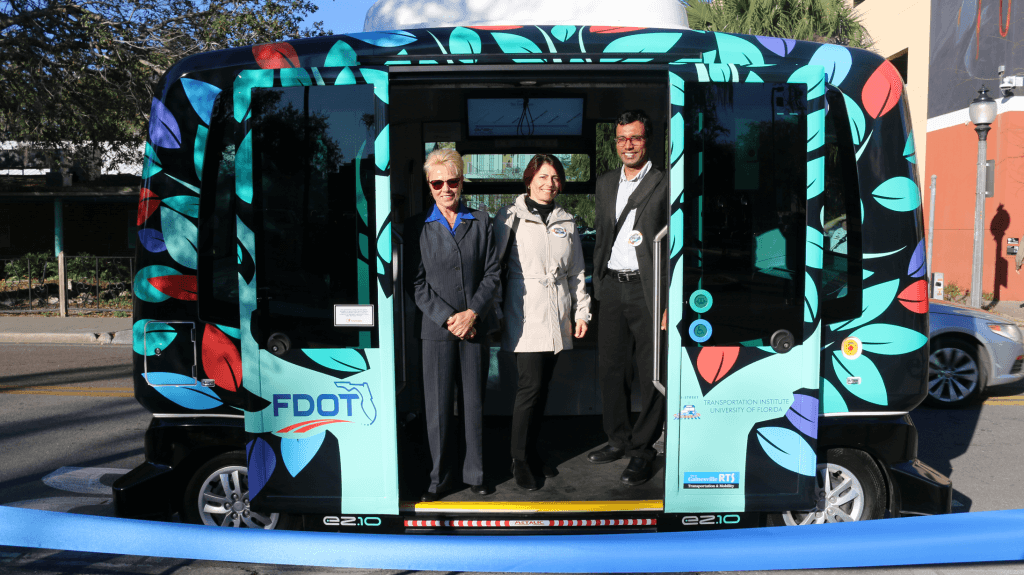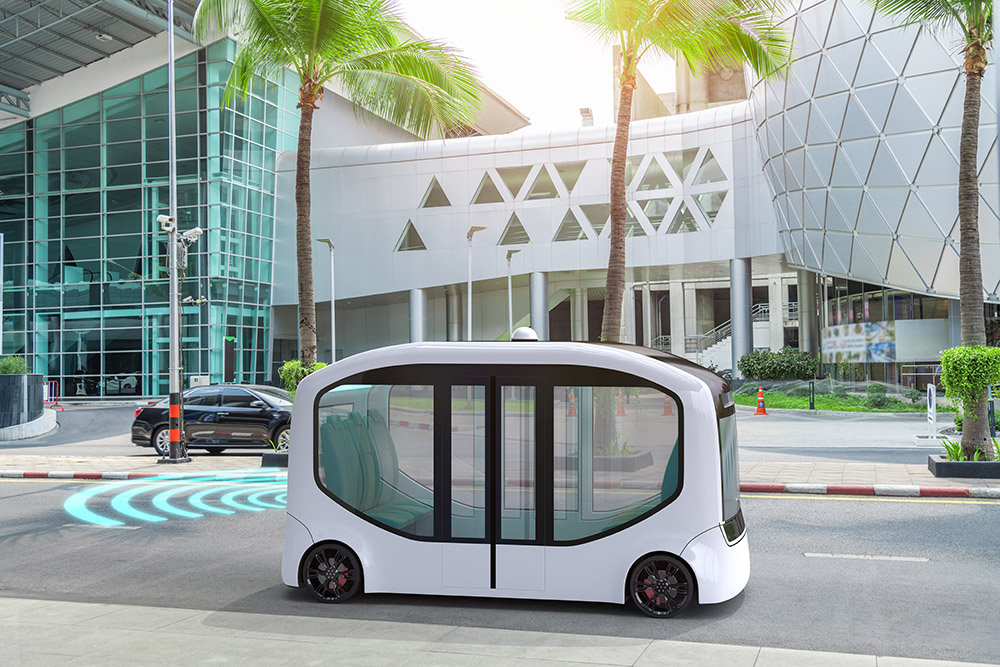Dr. Sherrilene Classen, chair and professor in the UF Department of Occupational Therapy, and her colleagues at the University of Florida studied how the lived experiences of people with and without disabilities impact their feelings about using autonomous shuttles (AS) after riding in such a vehicle. The information gained from this study has the potential to provide information that will shape industry guidelines and impact public policy.
The study analyzed qualitative data from older, younger, and middle-aged adults, including people with disabilities (PWDs). Several key themes emerged because of this study: safety, ease of use, cost, availability, aging, overall experiences with AS, and AS information (i.e., the ability to access information about AS through the media, education, or scientific publications).
For example, all groups reported concerns related to safety, ease of use, availability, AS information, and experiences with AS. Aging was not mentioned among PWDs, but it was a concern for older, younger, and middle-aged groups. This group said that AS can help them maintain their independence as they experience cognitive and physical issues as they grow older.
Safety and ease of use were a top priority for all groups expressing positive remarks ranging from fewer collisions, safety for bicycles and pedestrians, less traffic, pollution, and human errors to concerns such as potential hacking, technical glitches or “bugs,” and more exposure to viruses such as COVID-19. PWDs said having an operator inside the AS would make them feel more comfortable in an emergency where an individual had to take control of the vehicle.
For the ease of use theme, PWDs said the AS would allow them to be more independent and socially active. The other three groups said riding in an AS would enable them to relax, multitask, enjoy the ride, have less stress and worry, and it would solve their parking issues. The AS’s slow speed was an issue cited among all groups.
As for cost, participants felt that fares could increase due to maintenance, insurance, and repair, but others felt that fuel, labor, and parking savings would translate into savings for them. Additionally, having the shuttle operating closer to their homes with a more frequent availability (schedule) and accessibility options for PWDs would impact their decision to use the AS.

All participants wanted to know more about the technology behind AS (transparency), including its safety record compared to what the news media has portrayed. Finally, as for all participants’ exposure to an AS, very few reported having any experience. However, those who did value the experience said more knowledge of an AS is necessary.
This study integrates the experiences and perspectives of a diverse group of people using AS. The study’s inclusiveness among the age groups and PWDs will help stakeholders such as policymakers, manufacturers, and service providers design, develop, and roll out strategies that consider the needs of all users.
For more information, contact Dr. Sherrilene Classen at sclassen@phhp.ufl.edu.
Hwangbo, S. W., Stetten, N. E., Wandenkolk, I. C., Li, Y., Classen, S. (2024). Lived experiences of people with and without disabilities across the lifespan on autonomous shuttles. Future Transportation, 4(1), 27-45. https://doi.org/10.3390/futuretransp4010003
